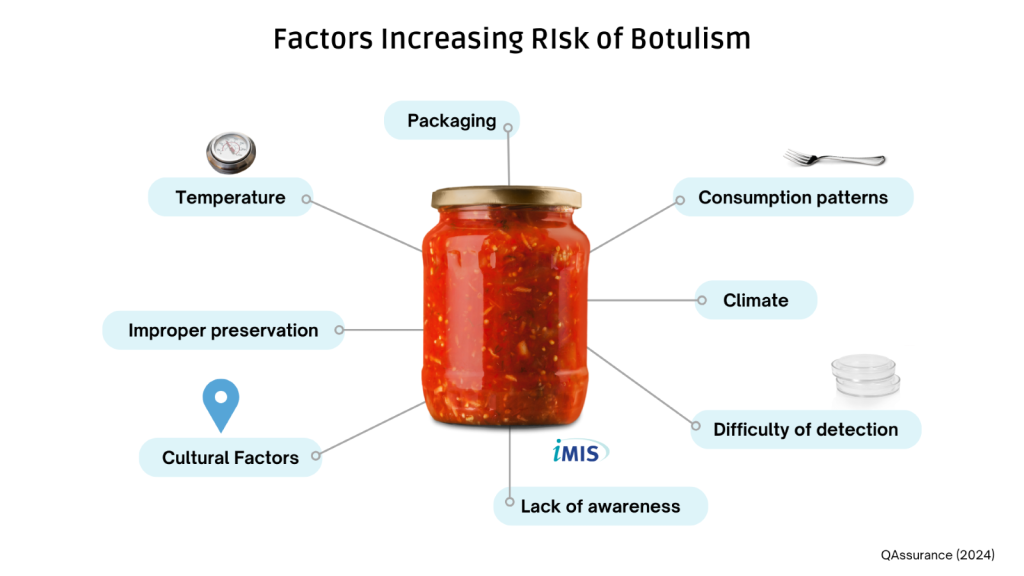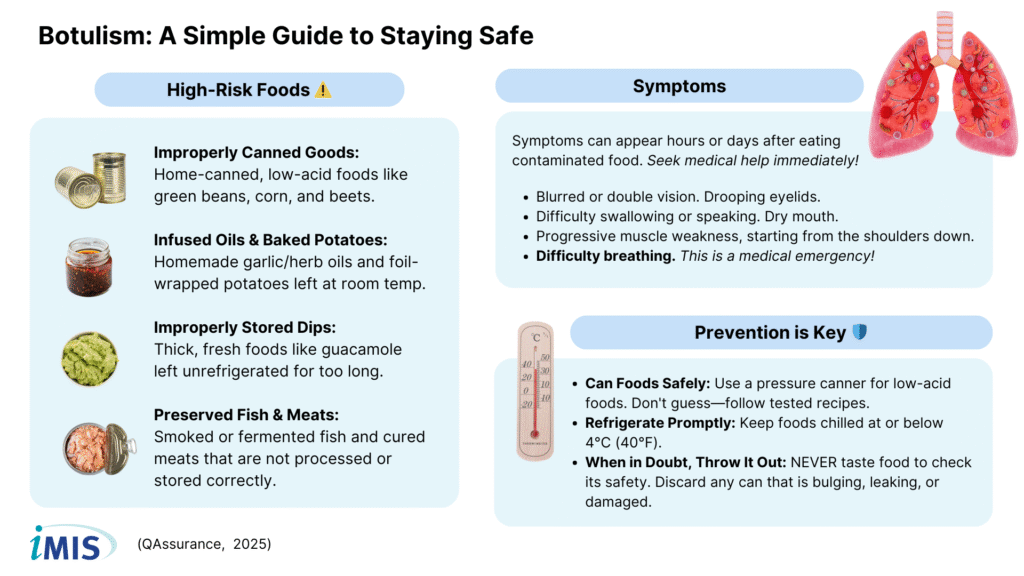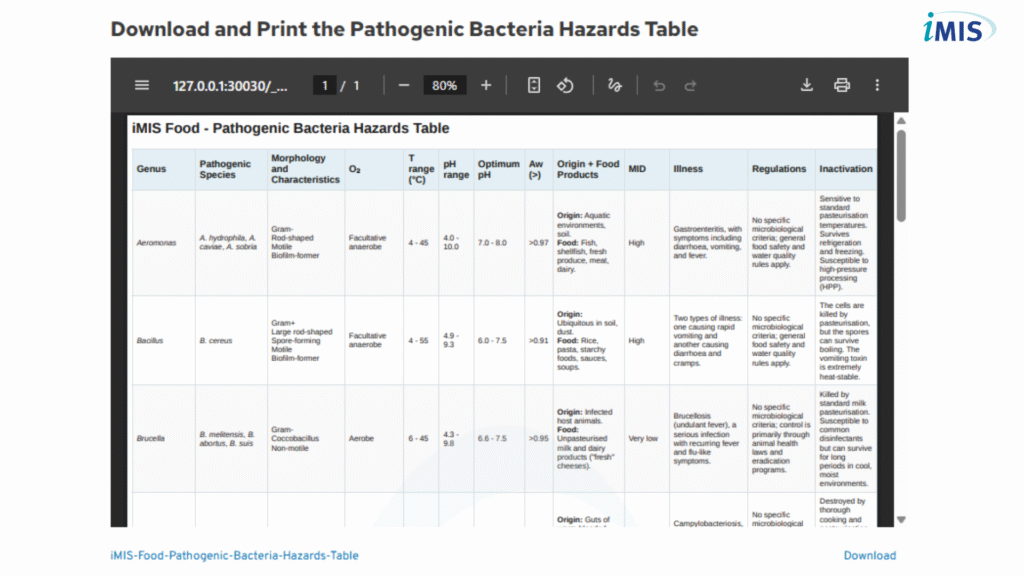Introduction
Recent tragic events in Sardinia have brought a rare but severe foodborne illness back into the public consciousness. The deaths of two women, reportedly linked to consuming contaminated guacamole at a local festival, serve as a powerful reminder that while the risk of botulism is low, the consequences can be devastating.
Understanding the science behind Clostridium botulinum and implementing rigorous safety protocols are crucial for both consumers at home and food businesses in their daily operations. This article explores the nature of this hazard and outlines the essential prevention strategies that can ensure food safety for all.
The Silent Hazard: Understanding Clostridium botulinum
Botulism is a serious, paralytic illness caused by a neurotoxin produced by the bacterium Clostridium botulinum. These bacteria are ubiquitous in the environment, commonly found in soil, water, and on the surfaces of fresh produce. In their dormant, spore form, they are harmless. However, when conditions are right, these spores can germinate, multiply, and produce one of the most potent toxins known to science.
The specific conditions that allow C. botulinum to thrive and produce its deadly toxin are well-understood:
- Low-oxygen environment: The bacterium is anaerobic, meaning it grows in the absence of oxygen. This makes vacuum-sealed packages, canned goods, and dense foods like guacamole potential danger zones.
- Low acidity: The toxin is not produced in acidic environments. A pH value greater than 4.6 is required for the bacteria to grow.
- Temperature: Different strains of C. botulinum grow at different temperatures, but many thrive in common temperature ranges, with some able to grow at temperatures as low as 3°C.
- Moisture: The bacteria require a certain amount of available water (water activity) to grow.

Recognizing the Symptoms of Botulism Intoxication
Symptoms of foodborne botulism can begin anywhere from a few hours to several days after ingesting the contaminated food. According to health authorities, the illness often starts with gastrointestinal issues like nausea, vomiting, and abdominal pain. These initial signs are followed by neurological symptoms as the toxin begins to affect the nervous system:
- Blurred or double vision
- Dry mouth
- Difficulty swallowing and speaking
- Drooping eyelids
- Progressive muscle weakness
In the most severe cases, the illness can lead to paralysis of the respiratory muscles, causing respiratory failure and death.
An Unlikely Suspect: The Risk in Guacamole
While often associated with canned goods, the recent cases highlight that even freshly prepared foods can pose a risk if handled improperly. Guacamole, a thick dip made from avocados, can create the low-oxygen, low-acid environment necessary for C. botulinum spores to germinate, especially when left at room temperature for extended periods.
Preventing Botulism: Safe Guacamole Handling
- For homemade guacamole: Ensure enough acid (like lime juice) is added. It should be consumed within 24 hours of preparation and must always be stored in the refrigerator at 4°C or below in an airtight container.
- For store-bought guacamole: Always check the expiration date and the integrity of the packaging before purchasing. Never consume a product if the package appears swollen or damaged. Once opened, follow the storage instructions on the label. Discard the product if it has an altered smell or a dark color.
Preventing Botulism at Home: A Consumer’s Guide
1. Master Home Canning:
- Use a pressure canner for low-acid foods: For foods like vegetables, meats, and fish, a boiling water bath does not reach a high enough temperature to destroy C. botulinum spores. A pressure canner is essential.
- Follow tested recipes: Always use up-to-date, scientifically tested recipes from reliable sources.
2. Smart Storage and Inspection:
- Refrigerate properly: Immediately refrigerate homemade infused oils and keep them for no more than four days.
- Inspect before you eat: Never consume food from a can that is leaking, bulging, or damaged. The golden rule is: when in doubt, throw it out!

Industrial-Scale Prevention: A Mandate for Food Businesses
While most cases of botulism are linked to home-prepared foods, industrial products are not without risk. For the food industry, controlling C. botulinum is a fundamental responsibility.
1. Thermal processing (the “botulinum cook”): For low-acid, shelf-stable canned goods, the thermal process is a Critical Control Point (CCP). This process is scientifically validated to deliver a “botulinum cook,” a specific time-temperature combination that ensures the destruction of spores.
2. Formulation as a Control: The product’s recipe is a powerful tool for safety. Manufacturers control the growth of C. botulinum by:
- Acidification: Ensuring the product’s pH remains at or below 4.6.
- Water activity reduction: Lowering the amount of available water by adding salt or sugar.
- Use of preservatives: In products like cured meats, sodium nitrite is used to inhibit spore growth.
3. Refrigeration and supply chain control: For products that are not commercially sterile, such as some vacuum-packed items, strict temperature control at or below 3.3°C (38°F) is the primary barrier to toxin production.
The recent events are a clear signal that there is no room for complacency. From a simple bowl of guacamole to an industrial canning line, a deep understanding of the risks and a commitment to proven prevention methods are the keys to keeping our food supply safe.
Preventing Food Safety Risks with iMIS Food
iMIS Food is a comprehensive software platform designed to streamline and automate food safety management for businesses. A key component of this system is its integrated library of complete hazards tables, including a detailed bacteria hazards table.
Such a tool is invaluable for building a robust hazard analysis, the cornerstone of any effective HACCP plan. By offering a centralized and scientifically-grounded database of pathogens and their specific control measures, these tables save precious time, reduce the risk of human error, and empower companies to ensure no potential threat is overlooked.

Stay Connected: Join our Newsletter!
Ready to learn more? Subscribe to our newsletter for the latest updates, tips, and exclusive content delivered straight to your inbox!
Sources:
- Sky TG24: “Botulino, guacamole tra i cibi a rischio: quando consumarlo e come conservarlo.” August 20, 2025.
- World Health Organization (WHO): Botulism Fact Sheet.
- U.S. Centers for Disease Control and Prevention (CDC): Botulism Prevention.
- European Food Safety Authority (EFSA): Botulism.
Related articles to Guacamole Botulism Risk: How to Stay Safe After Recent Outbreak
Many customers and visitors to this page 'Guacamole Botulism Risk: How to Stay Safe After Recent Outbreak' also viewed the articles and manuals listed below:
